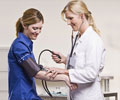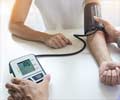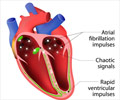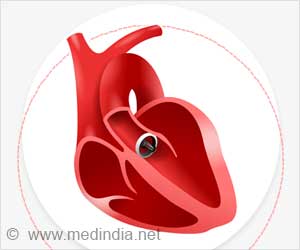Results of a Johns Hopkins-led study have identified a possible link between a history of sudden drops in blood pressure and the most common form of irregular heartbeat.

While a simple, inexpensive doctor's office test can check for orthostatic hypotension, the researchers caution that the condition itself does not generally need treatment, nor have they demonstrated that it is a cause of atrial fibrillation.
They further note that because atrial fibrillation is often present without causing noticeable symptoms, some people may already have the rhythm disturbance before an episode of orthostatic hypotension, though they tried to exclude those subjects from the study.
But the researchers say their findings do suggest the need for further study and that clinicians who diagnose orthostatic hypotension in their patients need to be more vigilant than they otherwise might be in watching out for atrial fibrillation. The arrhythmia is an underdiagnosed condition that increases the risk of stroke fivefold, as well as risks of heart failure and dementia. People with atrial fibrillation are often treated with blood thinners to reduce the risk of stroke, and with other medications that regulate the rate and rhythm of the heartbeat. The findings were published last week in the journal PLOS ONE.
"We hope our research will sensitize physicians to a possible link between orthostatic hypotension and atrial fibrillation, and that they will go the extra step to see if something more serious is going on when patients experience rapid blood pressure fluctuations," says study leader Sunil K. Agarwal, M.D., M.P.H., Ph.D., a fellow in the Division of General Internal Medicine at the Johns Hopkins University School of Medicine. "We want this on their radar screens."
For the study, the researchers followed 12,071 African-American and white men and women ages 45 to 64 years who were enrolled in the Atherosclerosis Risks in Communities (ARIC) study. From 1987 to 1989, each subject had a baseline visit during which information on socioeconomic indicators, medical history, family history, cardiovascular disease risk factors, serum chemistries, electrocardiograms (ECGs), medication use and anthropometrics was collected. Three follow-up visits were conducted, as well as annual telephone interviews and active surveillance of hospitalizations and death.
Advertisement
During an average follow-up of 18.1 years, 1,438 (11.9 percent) of the study participants developed atrial fibrillation. Those with orthostatic hypotension, after accounting for factors such as race, age, gender and other common risk factors for the arrhythmia, were 40 percent more likely than those without orthostatic hypotension to develop an irregular heartbeat. Atrial fibrillation was identified by 12-lead ECGs recorded during three follow-up visits at three-year intervals through 1998, and by hospitalizations and/or death certificates through 2010.
Advertisement
Atrial fibrillation is the most common type of arrhythmia, or problem with the rate or rhythm of the heart. During an arrhythmia, the heart can beat too fast, too slow or with an irregular rhythm.
Atrial fibrillation affects approximately 3 million people in North America, and the prevalence is projected to double by 2050. It occurs when the upper chambers of the heart, the atria, beat chaotically and usually rapidly out of coordination with the two lower chambers of the organ. During atrial fibrillation episodes, blood may pool inappropriately in the upper chamber, forming clots that can travel to the brain and hindering the healthy function of the heart, Agarwal says.
Blood thinner treatment has been shown to dramatically reduce stroke risk in these patients by more than half, but many don't take the medication because they are unaware they have the condition. Symptoms include heart palpitations, shortness of breath and weakness.
Agarwal says doctors don't routinely test for orthostatic hypotension. It is done by having the patient lie down for two to five minutes while having blood pressure tested several times, then standing up and having the same readings taken again after two minutes. Sometimes a patient with orthostatic hypotension will feel lightheaded and dizzy upon standing, but not always.
"We need more research into whether there is any sort of causal relationship between orthostatic hypotension and atrial fibrillation, or whether it is simply a marker of dysfunction of autonomic nervous system or generally poor health," he says.
Source-Eurekalert















